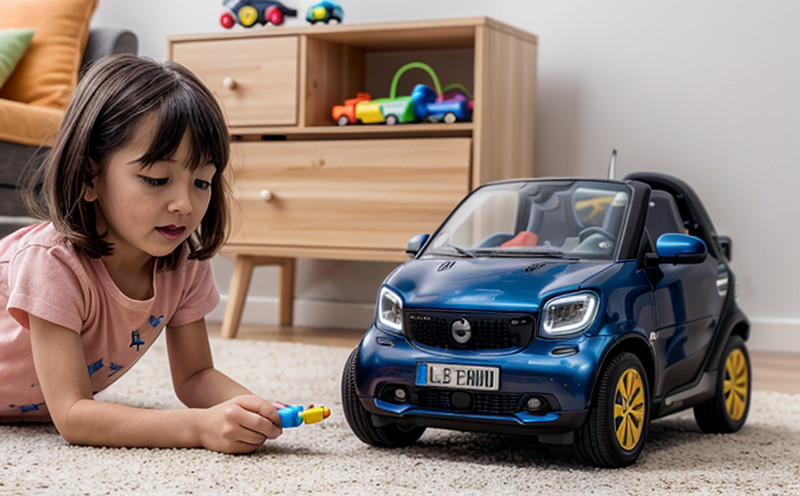IEEE 802.11 Wireless Connectivity Testing in IoT Toys
The IEEE 802.11 standard family is a set of protocols used to implement wireless local area networks (WLANs) and wireless personal area networks (WPANs). This service focuses specifically on the testing of smart and connected toys that rely on IEEE 802.11 wireless connectivity for their operation or communication.
As technology advances, so do the expectations from parents and regulatory bodies regarding product safety and performance. Smart and connected toys are increasingly integrating wireless connectivity to enhance user experience through features like voice commands, remote control, and data sharing. The IEEE 802.11 standard ensures that these devices operate reliably and securely within expected ranges.
The testing process involves several critical steps aimed at ensuring the toy's compliance with relevant standards while also verifying its functionality and robustness against potential issues such as signal interference or degradation in performance over time. This comprehensive approach helps manufacturers meet strict quality control requirements set forth by regulatory bodies like the Consumer Product Safety Commission (CPSC) in the United States.
During testing, we simulate real-world scenarios that a toy might encounter during its lifecycle—from initial setup to extended use and beyond. We employ state-of-the-art equipment capable of generating various types of wireless signals according to different IEEE 802.11 specifications (e.g., b/g/n/ac). Our labs are equipped with specialized software tools designed specifically for IoT device testing which allow us to monitor key metrics such as signal strength, latency, throughput, and security.
A critical aspect of our service is ensuring that the tested toys comply not only with IEEE 802.11 standards but also any additional regional or international requirements applicable to the target market(s). This includes adherence to relevant safety guidelines provided by organizations such as ISO (International Organization for Standardization) and EN (European Norms).
Our team of experts works closely with clients throughout the testing process, providing guidance on best practices for integrating IEEE 802.11 wireless connectivity into smart toys. From concept design through final product release, we ensure that each stage meets stringent quality assurance criteria.
Applied Standards
| Standard Name | Description |
|---|---|
| IEEE 802.11 | The set of protocols for implementing wireless local area networks. |
| ISO/IEC 27001:2013 | An information security management system standard that specifies requirements for establishing, implementing, maintaining and continually improving an ISMS. |
| EN 305284:2019 | Covers the technical characteristics of radio access networks used in connected toys. |
Benefits
- Ensures compliance with relevant international standards ensuring product safety and performance.
- Identifies potential issues early in development, allowing for timely corrections.
- Provides detailed reports that can be used to improve future products or designs.
- Saves time and money by preventing costly rework due to non-compliance issues later down the line.
Industry Applications
- Manufacturers seeking certification for their smart toys in multiple regions.
- R&D teams looking to optimize wireless connectivity within innovative toy designs.
- Quality managers responsible for maintaining high standards across all products offered by the company.
- Compliance officers ensuring that new toys meet current and future regulations regarding IoT devices.





